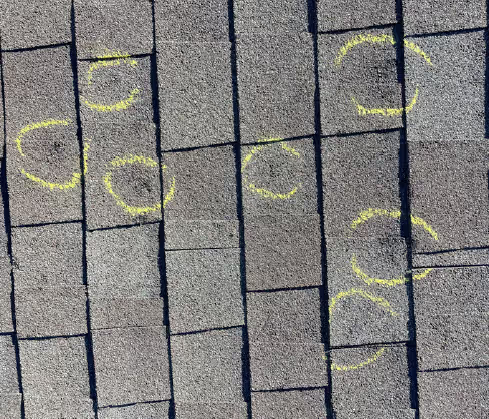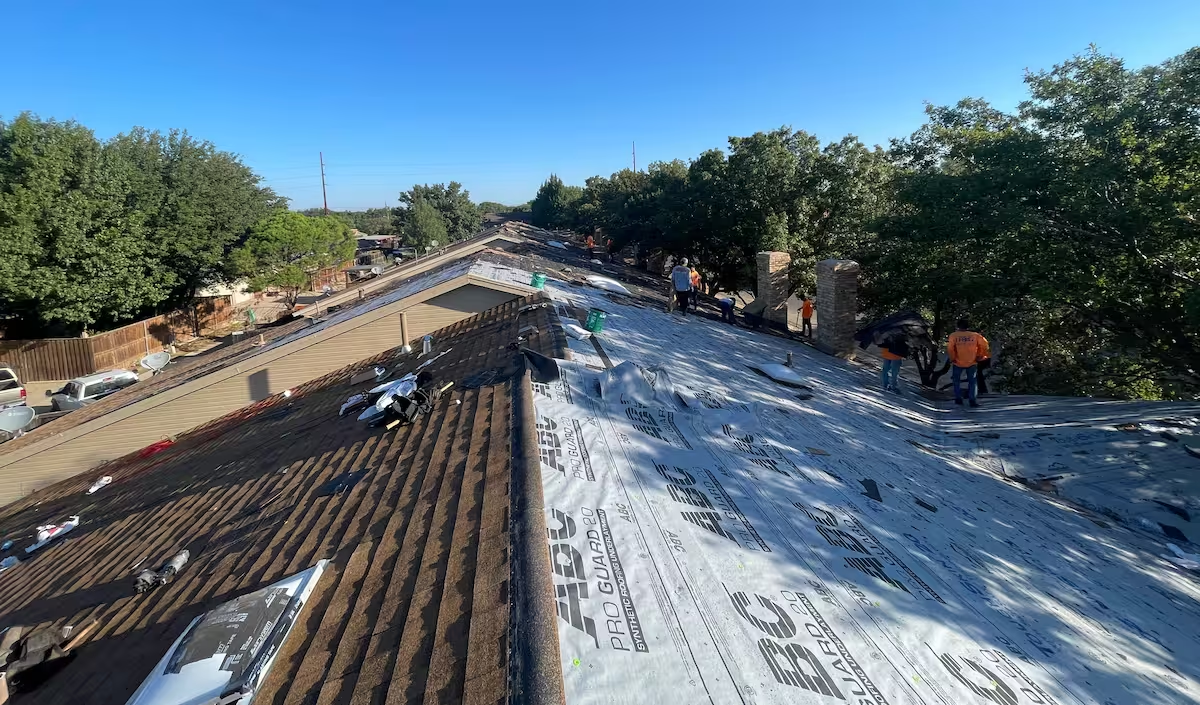Recognizing Critical Roof Warning Signs
Your roof provides silent service until warning signs indicate potential problems that require immediate professional attention. Ignoring early warning signs can turn minor issues into major disasters, leading to extensive water damage, structural problems, and costly emergency repairs that could have been prevented with prompt action.
Understanding these five critical warning signs helps homeowners identify urgent roofing issues before they escalate into emergency situations requiring extensive repairs or premature roof replacement.
1. Water Stains and Ceiling Discoloration
Water stains on ceilings or walls represent one of the most serious warning signs requiring immediate attention. Even small stains indicate active leaks that can quickly spread, causing structural damage, mold growth, and electrical hazards if left unaddressed.
What to Look For
- Brown or yellow stains on ceilings, especially near roof lines
- Discoloration around vents, chimneys, or skylights
- Peeling paint or wallpaper near the roofline
- Visible water dripping during or after rainfall
Why This Requires Immediate Action
Water infiltration damages insulation, drywall, electrical systems, and structural components. Mold can begin growing within 24-48 hours in moisture-rich environments, creating health hazards and expensive remediation costs.
Immediate Steps
- Place buckets or containers to catch dripping water
- Document damage with photographs for insurance purposes
- Contact a professional roofer for emergency inspection
- Move valuable items away from affected areas
2. Missing, Damaged, or Curling Shingles
Visible shingle problems indicate compromised roof protection that leaves your home vulnerable to water infiltration and further damage. Missing or damaged shingles create entry points for water, wind, and pests that can cause extensive interior damage.
Shingle Warning Signs
- Shingles missing entirely, especially after storms
- Curled, cracked, or buckled shingle edges
- Granules collecting in gutters or around your home
- Bald spots where granules have worn away completely
Progressive Damage Risks
Damaged shingles allow water to penetrate underlying materials, leading to decking rot, insulation damage, and potential structural issues. Wind can catch damaged shingles and cause additional failures during storms.
Professional Assessment Needs
While individual shingle replacement might seem simple, proper assessment requires professional evaluation to determine extent of damage and ensure appropriate repairs that prevent future problems.
3. Sagging Roof Areas or Structural Deformation
Visible sagging, drooping, or deformation in roof lines indicates serious structural problems requiring immediate professional evaluation. Sagging roofs can lead to catastrophic failure if underlying structural issues aren't addressed promptly.
Structural Warning Signs
- Visible dips, curves, or sagging in roof lines
- Doors and windows that stick or won't close properly
- Cracks in interior walls, especially near the roofline
- Uneven or wavy appearance when viewing the roof from ground level
Underlying Causes
Sagging typically results from water damage weakening structural components, inadequate support for heavy roofing materials, or age-related deterioration of rafters and decking.
Safety Considerations
Structural roof problems pose immediate safety risks to occupants. Evacuate affected areas and contact professionals immediately when observing significant sagging or deformation.
"Don't wait for small problems to become big disasters. Early professional intervention can save thousands of dollars and prevent safety hazards that put your family at risk."
4. Damaged or Missing Flashing
Flashing problems around chimneys, vents, skylights, and roof edges create vulnerable points where water can infiltrate your roofing system. Flashing failures cause the majority of roof leaks and require immediate attention to prevent extensive water damage.
Flashing Problem Indicators
- Visible gaps, cracks, or separation in flashing materials
- Rust, corrosion, or deterioration of metal flashing
- Loose or missing flashing around penetrations
- Caulking that's cracked, missing, or pulling away from surfaces
High-Risk Areas
Pay special attention to flashing around chimneys, vent pipes, skylights, dormers, and where different roof sections meet. These areas experience the most stress and are most likely to develop problems.
Professional Repair Importance
Proper flashing repair requires specialized knowledge of waterproofing techniques and appropriate materials. DIY flashing repairs often fail and can make problems worse if not done correctly.
5. Granule Loss and Shingle Deterioration
Excessive granule loss indicates advanced shingle aging and reduced protection against UV radiation and weather damage. Significant granule loss compromises your roof's weatherproofing and fire resistance, requiring prompt professional evaluation.
Granule Loss Signs
- Large amounts of granules in gutters and downspouts
- Bare spots or bald patches visible on shingles
- Dark streaks or discoloration on shingle surfaces
- Granules accumulating around your home's foundation
Accelerated Deterioration
Once granule loss begins, deterioration accelerates rapidly as underlying materials become exposed to UV radiation and weather extremes. This can lead to shingle cracking, curling, and complete failure.
Timing Considerations
While some granule loss is normal over time, sudden or excessive loss indicates problems that require immediate professional assessment to determine if repairs or replacement are necessary.
When to Call Emergency Roofing Services
Certain warning signs require immediate emergency response to prevent catastrophic damage or safety hazards. Don't delay when you observe these critical conditions that indicate imminent roof failure or dangerous situations.
Emergency Situations
- Active leaking during storms with water entering living spaces
- Visible sagging or structural deformation
- Large sections of missing roofing material
- Storm damage with exposed decking or structural elements
24/7 Professional Response
Quality roofing contractors offer emergency services for urgent situations. Keep contact information readily available and don't hesitate to call when safety or significant property damage is at risk.
Prevention Through Regular Inspection
Regular professional inspections help identify warning signs before they become emergencies. Biannual inspections can prevent 80% of major roofing problems through early detection and prompt intervention.
Inspection Schedule
- Professional inspections twice yearly (spring and fall)
- Post-storm assessments after severe weather events
- Annual maintenance to address minor issues promptly
- Documentation of roof condition for insurance and warranty purposes
DIY Safety Considerations
While homeowners can observe obvious warning signs from ground level, never attempt roof climbing for detailed inspections. Professional roofers have proper safety equipment and training for safe roof access.
Documentation and Insurance Considerations
Proper documentation of warning signs and damage helps support insurance claims and warranty coverage when professional repairs become necessary.
Documentation Best Practices
- Photograph all visible damage from multiple angles
- Record dates when warning signs first appeared
- Keep copies of all professional inspection reports
- Document weather events that may have caused damage
Insurance Communication
Contact your insurance company promptly when you discover damage that may be covered under your policy. Many policies have time limits for reporting claims after damage occurs.
Cost of Delayed Action
Ignoring warning signs leads to exponentially higher repair costs and potential safety hazards. Minor repairs costing hundreds can prevent major damage costing thousands when addressed promptly by qualified professionals.
Progressive Damage Costs
- Early intervention: $200-800 for minor repairs
- Delayed response: $2,000-8,000 for water damage remediation
- Emergency situations: $10,000+ for structural repairs and replacement
- Catastrophic failure: $15,000-50,000+ for complete roof replacement and interior restoration
Choosing Professional Help
When warning signs appear, selecting qualified roofing professionals ensures proper diagnosis and effective solutions. Experienced contractors can distinguish between cosmetic issues and serious problems requiring immediate attention.
Contractor Selection Criteria
- Local licensing and insurance verification
- Experience with your specific roofing material type
- Emergency service availability for urgent situations
- References from recent customers with similar issues
Professional Assessment Value
Professional roofers provide comprehensive evaluations that identify all issues, prioritize repairs by urgency, and develop cost-effective solutions that address underlying problems rather than just symptoms.
Conclusion
Recognizing these five critical warning signs – water stains, damaged shingles, structural sagging, flashing problems, and granule loss – enables homeowners to take prompt action that prevents minor issues from becoming major disasters. Early professional intervention saves money, protects property value, and ensures family safety. Don't ignore warning signs or delay professional assessment when these conditions appear. The cost of prevention is always less than the cost of major repairs, and prompt action protects your most important investment while maintaining your home's safety and comfort. Contact qualified roofing professionals immediately when you observe any of these warning signs to ensure optimal protection and peace of mind.
.png)



